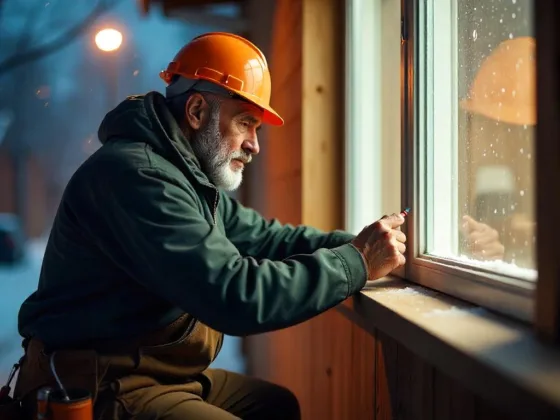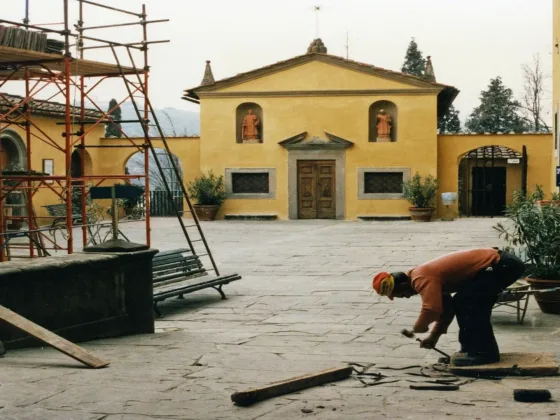Table of Contents Show
Roofs don’t last forever. But how do you know when it’s time to replace yours?
Many homeowners only notice a problem once water starts seeping through the ceiling. By then, the damage may already be extensive. Damp, rot, and mould often start long before the first visible leak.
Re-roofing at the right time can prevent major repair bills—and protect your home’s structural integrity.
So, how can you tell if your roof is past its prime?
Let’s break it down.
1. How Old Is Your Roof?
Start with age.
Different roofing materials have different lifespans:
- Felt roofs generally last 10–15 years.
- Clay tiles can last 50 years or more.
- Concrete tiles usually last 40–60 years.
- Slate roofs often exceed 100 years—but fixings can fail earlier.
- Flat roofs may need replacing after 10–25 years, depending on the materials used.
Even if your roof looks fine from the outside, time can take its toll underneath—on fixings, battens, underlay, and insulation.
Ask yourself: When was the roof last fully replaced or refurbished? Is it older than the materials’ typical lifespan?
If your answer is “I’m not sure” or “it’s been decades,” it’s worth arranging an inspection.
2. Do You See Broken or Slipped Tiles?
Loose, cracked, or displaced tiles are an obvious sign that something’s wrong.
Watch out for:
- Tiles on the ground after a storm
- Visible gaps on the roof
- Cracked or broken pieces are visible from below
- Dislodged ridge or hip tiles
These issues let water in and can weaken the structure beneath. They also make the roof more vulnerable to future weather damage.
Example: After a storm in Kent, a homeowner noticed two clay tiles had slid out of place. Within weeks, water began leaking into the loft, damaging insulation and plaster.
Tip: Check the roof from the ground using binoculars. Don’t climb up unless you’re trained and have the right safety equipment.
3. Are There Signs of Damp or Water Damage Inside?
Leaks don’t always announce themselves with obvious drips. Often, the clues are subtle and hidden.
Look out for:
- Discoloured patches on ceilings or walls
- Peeling wallpaper or blistering paint
- Damp smells in upstairs rooms or the loft
- Warped or bulging plasterboard
Even a small leak can lead to rot and mould over time. Moisture build-up in the loft can also damage insulation, timbers, and stored items.
Ask yourself: If your walls are speaking to you in stains and smells, what are they saying about your roof?
4. Is the Roof Sagging?
A sagging or uneven roofline could indicate structural problems.
Possible causes include:
- Water-damaged rafters or battens
- Rot in supporting timbers
- Overloading from moss, snow, or pooling water
- Failure in older roof fixings or supports
How to check: Stand back and look at your roofline from a distance. It should appear straight and even. If you spot any visible dips, bows, or waves—especially near the centre—it’s time to get it checked.
A sagging roof is more than a cosmetic issue. It may mean the roof is no longer structurally sound.
5. Are There Issues in Valleys or Around Roof Junctions?
The valleys—where two roof slopes meet—handle a lot of rainwater. So do junctions around chimneys, dormers, and extensions.
Watch for:
- Cracks or displacement in lead flashing
- Debris build-up
- Water staining along interior valleys
- Visible gaps or broken pointing
These areas are vulnerable to leaks and should be checked regularly.
Real example: A homeowner in Sheffield discovered significant water ingress through a poorly sealed roof valley, which led to wet rot in the timber structure beneath.
Neglected valleys and junctions are often the source of slow, hidden leaks.
6. Is Moss, Lichen, or Algae Taking Over?
Organic growth on the roof is common in the UK climate. But that doesn’t mean it should be ignored.
- Moss holds moisture against the roof surface, which can cause tiles to degrade or become displaced.
- Algae and lichen suggest long-term dampness and poor drainage.
If left untreated, moss and algae can:
- Damage roofing materials
- Add weight and stress
- Block gutters and valleys
Tip: Don’t power wash your roof—it can do more harm than good. Consider gentle cleaning methods or hiring a specialist.
7. Are the Gutters Telling You Something?
Gutters do more than drain rainwater. They also collect clues.
Check for:
- Bits of roof material in the gutter
- Debris build-up causing overflows
- Rust stains or rot on the fascia
- Water trails on external walls
If the gutters are full of fragments or granules, that could mean your roof materials are deteriorating.
Blocked or damaged gutters can also force water back up under the eaves, causing internal damp.
Listen to your gutters—they know what’s going on up top.
8. Can You See Light Through the Loft Roof?
Your loft can reveal what’s going on above.
Go up during daylight and look for:
- Shafts or streaks of sunlight
- Drips or damp patches
- Rotting or damp-smelling wood
- Signs of mould or mildew
Daylight visible through the roof boards means gaps—and where light gets in, so can water, wind, and pests.
While you’re there, feel for draughts or check the condition of insulation. Damp insulation not only reduces energy efficiency—it often signals roof leaks.
9. Have Your Energy Bills Gone Up?
A failing roof doesn’t just leak water—it can leak heat.
Problems like:
- Poor ventilation
- Wet insulation
- Gaps in the roof structure can make your home harder to heat in winter and keep cool in summer.
If you’ve noticed a steady increase in your energy bills without a clear cause, your roof could be to blame.
Is your home harder to heat than it used to be? Don’t just check the boiler. Check above.
When Is It Time to Call a Roofer?
Not every roofing issue means you need a full replacement. Sometimes repairs are enough. A reputable roofing company, such as norwich-roofing.co.uk, can help you with this.
But consider a re-roof if:
- Your roof is nearing the end of its expected lifespan.
- Repairs are becoming more frequent or expensive.
- Multiple areas are showing signs of failure.
- A professional survey flags widespread deterioration.
A re-roof is a major job, but it brings long-term peace of mind. It can also improve your home’s insulation, increase property value, and prevent future headaches.
Trust What You See—and What You Don’t
Your roof works hard, silently protecting you from the elements every day. But it’s easy to take it for granted—until it starts to fail.
Watch out for:
- Ageing materials
- Loose or broken tiles
- Interior signs of moisture
- Organic growth or sagging
- Gaps and structural warning signs
Still unsure? Get a trusted roofer to carry out a full inspection. Many offer free surveys and can help you decide whether it’s time for repairs or a full re-roof.
Your roof is your home’s first line of defence. Know when it’s time to give it the care it deserves.











